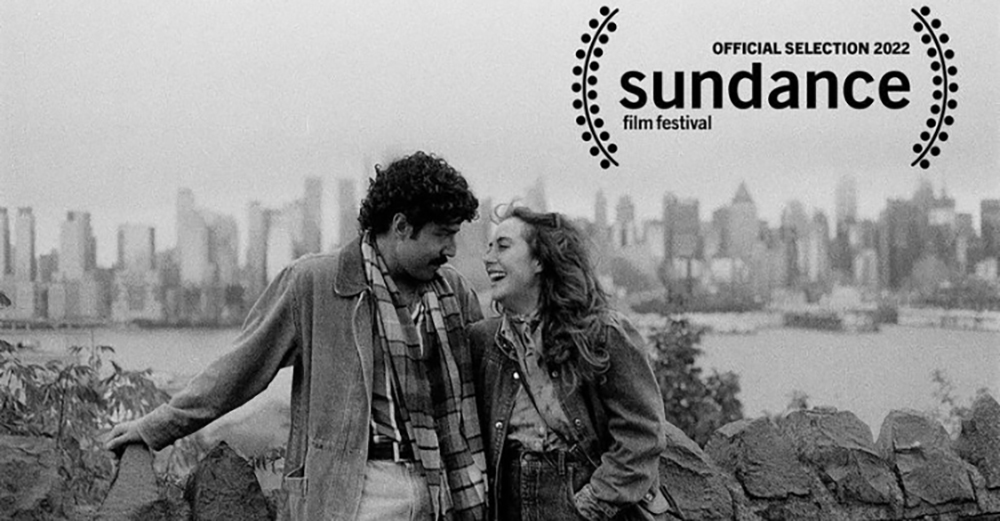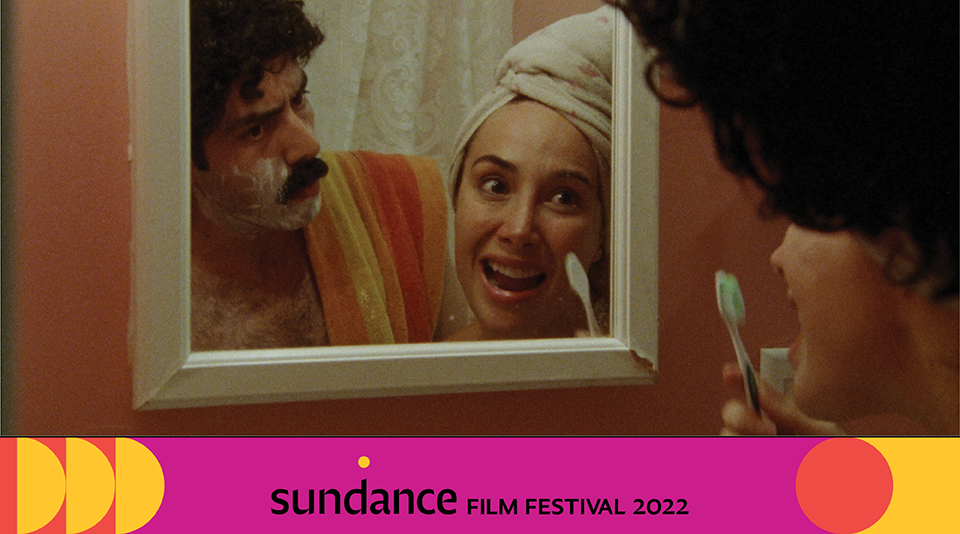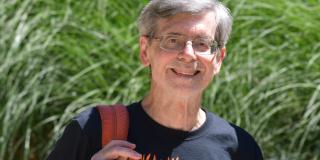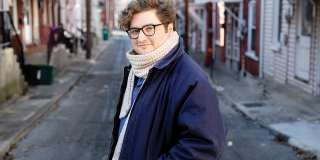
Visiting Assistant Professor of English Laura Marie Marciano works with a close-knit group of creative friends to push the boundaries of both her art and her teaching.
Every year in mid-January, filmmakers, critics, and celebrities descend upon the ski resort town of Park City, Utah, for ten days of screenings, panels, parties, and more. This is the storied Sundance Film Festival, the largest one in the United States devoted to independent filmmaking, and one of the best networking events for filmmakers and others looking to break into the movie business.
 For visiting assistant professor of English Laura Marie Marciano, this year’s festival was an opportunity to further explore the possibilities of multimodal means of communication and expression.
For visiting assistant professor of English Laura Marie Marciano, this year’s festival was an opportunity to further explore the possibilities of multimodal means of communication and expression.
Marciano, a writer and educator who has also had a hand in various elements of film production over the past decade, served as the historical consultant for Chiqui, an entry in the Indie Episodic category that was created and directed by her friend, Carlos Cardona.
“Chiqui is a comedy-drama about his parents’ immigration from Colombia to the Tri-State area in 1987 while his mom was pregnant with him,” Marciano said.
Cardona intends for Chiqui to be the pilot episode for what will hopefully be a fully realized series available for streaming—as well as an opportunity to open doors for the tight group of friends who brought his vision to life.
“Getting into Sundance was kind of a huge shock,” Marciano said. “Hustling in film, or media, or the art world for so long and putting in all this work for over a decade to finally see it come to fruition in some way—it feels like a huge win for all of us.”
Marciano’s group of friends began their creative collaboration about five years ago when Marciano was at a museum with a mutual friend of Rand Rosenberg, Cardona’s longtime collaborator, and the cinematographer for Chiqui.
“Rand started talking to us, and we discovered that we had shared goals in artmaking,” Marciano said. “We also all come from humble middle class backgrounds, and are all interested in film theory and philosophy, and making art that matters.”
Marciano and Rand would go on to make a short film together called Say It With Flowers that premiered at Artbook at MoMA PS1 in 2018.
“Rand was interested in getting to know me more as a poet and as a writer, and how that could enhance his filmmaking,” Marciano said, “and I was interested in how film could expand the way I tell stories, and the way I use language.”
Though Marciano is a published poet, she has long wanted to work in multimodal media. A native of Providence, Rhode Island, Marciano graduated with a bachelor’s degree in creative writing from Fairfield University, but then went to Brooklyn College to get her MFA in interactive media.
“After I got my MFA, I started doing media and performance installations, creating an electronic opera and dance routine for the Brooklyn Public Library in 2011,” Marciano said. “It was for the 30 million people living with HIV.”
In 2014, Marciano started a online collective called Gemstone Readings to promote the work of women and queer poets through intertextual media, video art, and performance projects.
“A lot of poets had media elements in their work, and were making film and visual work to go along with their poems,” Marciano said. “There wasn't a general space for that, so I started the collective and then expanded on it to create events around the work that was made.”
In 2019, Marciano collaborated with artists Bunny Michael and Omega on a web series about the everyday choices of a queer artist living in Brooklyn titled What Would Higher Self Do? The series was written and co-created by Michael, and Marciano was the production designer.
Though video and film hasn’t been Marciano’s main career trajectory to date, her multimodal experiences have informed both her work and her teaching.
“I like to extend or expand the idea of what writing means,” Marciano said. “Anything can be writing. I want my students to know that a Netflix series, or that video ad they're getting on Instagram—are not only different texts they can analyze, but that there's different ways they can write a text.”
To that end, last semester Marciano had her students complete a project called “Humans of Lehigh” which mirrored the viral “Humans of New York” project of 2010. The students had to use text and visuals to introduce a community on campus to their class.
One project that particularly impressed Marciano was a group of students who profiled the Lehigh’s cafeteria workers, including the nutritionist and the people who work at the food stations, telling the stories of how each came to Lehigh, why they liked working there, and what kind of experiences they've had.
“They used photographs, video, and text to tell those stories, and it was beautifully done,” Marciano said. “I was very impressed with the semester's work, and I think I learned more about how to teach visual language to our students.”







